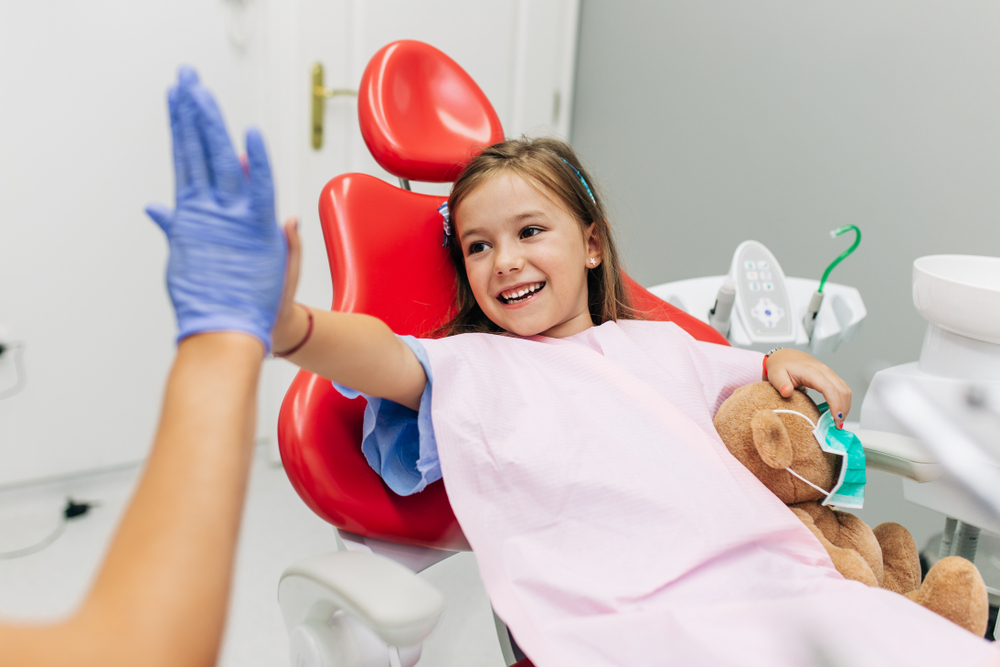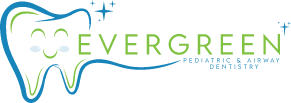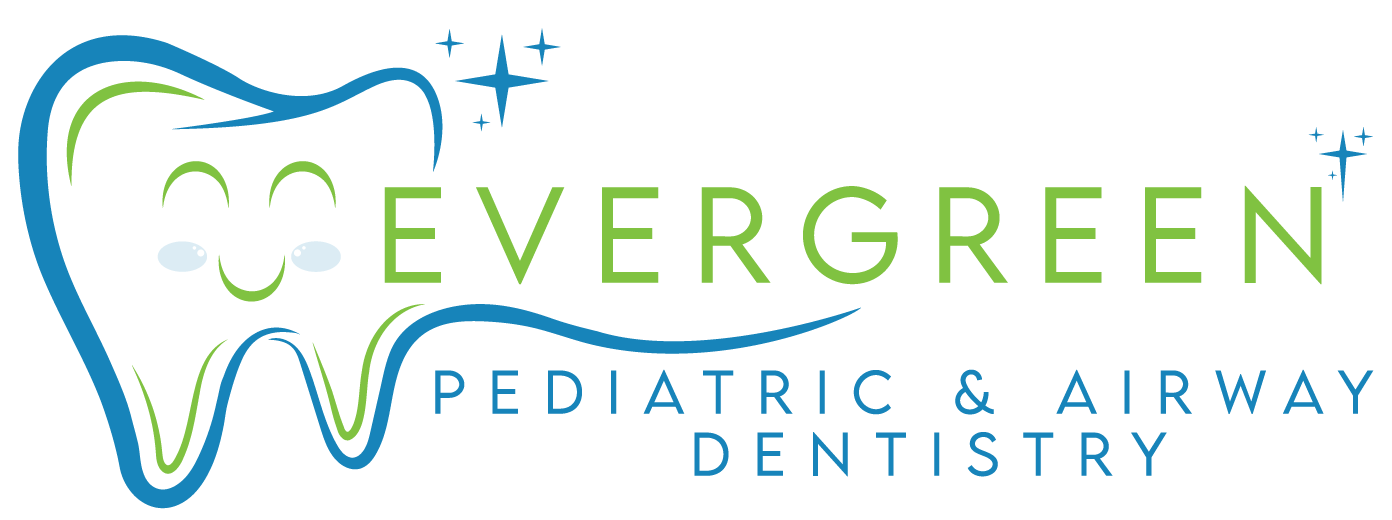Ensuring Comfortable Dental Visits with Sleep Dentistry
Imagine walking into a dental office where the environment is serene, and every patient—regardless of age—emerges with a relaxed smile. This isn’t a dream; it’s the reality of sleep dentistry. For many, the mere thought of a dental visit can induce anxiety, causing them to avoid essential care. But what if there was a way to transform dental visits from a dreaded chore into a tranquil experience? Enter sleep dentistry: a groundbreaking approach that ensures comfort and ease during dental procedures. In this article, we’ll delve into how sleep dentistry can make your dental visits more comfortable and stress-free.
What Is Sleep Dentistry and How Does It Work?
Sleep dentistry, also known as sedation dentistry, is a specialized field designed to ensure that dental visits are as comfortable and stress-free as possible for patients, particularly children. It involves the use of sedative medications to help patients relax during dental procedures. These sedatives can range from mild forms, such as nitrous oxide (commonly known as laughing gas), to more profound methods like oral sedatives or intravenous (IV) sedation. The goal of sleep dentistry is to alleviate anxiety, minimize discomfort, and make the overall dental experience more pleasant. By creating a calm and controlled environment, dental professionals can perform necessary treatments more efficiently, reducing the stress associated with dental care.
The process of sleep dentistry begins with a thorough assessment of the patient’s medical history, current health status, and specific needs. Based on this evaluation, the dental team determines the most appropriate type of sedation. For minor procedures or patients with mild anxiety, nitrous oxide may be used to induce a state of relaxation where the patient remains awake and responsive but feels calm and at ease. For more extensive procedures or higher levels of anxiety, oral sedatives or IV sedation might be administered. These methods induce a deeper level of sedation, where the patient may be partially or fully asleep but can still be awakened if necessary. Throughout the procedure, the dental team closely monitors the patient’s vital signs to ensure their safety and comfort.
Post-procedure, the effects of the sedation gradually wear off, and the patient awakens feeling little to no memory of the dental treatment. This aspect is particularly beneficial for children, who might otherwise retain negative memories of their dental experiences. The dental team provides detailed aftercare instructions to ensure a smooth recovery at home, emphasizing hydration, rest, and any necessary dietary adjustments. Parents are advised on how to monitor their child’s post-sedation recovery, including watching for any unexpected side effects. By removing the fear and discomfort traditionally associated with dental visits, sleep dentistry helps cultivate a positive relationship with dental care, promoting better oral health practices from a young age and ensuring that future dental visits are anticipated without anxiety.

Pediatric Sedation Dentistry
The Psychological Benefits: Easing Dental Anxiety
Sleep dentistry offers substantial psychological benefits by significantly easing dental anxiety, especially in children. Dental anxiety is a common issue that can deter individuals from seeking necessary dental care, leading to neglected oral health and more severe dental problems over time. By utilizing sedation techniques, sleep dentistry creates a calm and controlled environment where anxious patients can feel safe and relaxed. This reduction in fear and stress is crucial for encouraging regular dental visits and maintaining good oral hygiene practices. For children, in particular, a positive and stress-free dental experience early on can set the stage for a lifetime of healthy dental habits, free from the dread that often accompanies dental appointments.
One of the primary psychological benefits of sleep dentistry is the alleviation of past trauma associated with dental procedures. Many individuals, especially young children, may have had negative experiences at the dentist, leading to long-lasting fear and avoidance behaviors. Sleep dentistry helps to break this cycle by ensuring that subsequent dental visits are pain-free and pleasant. When patients know they can undergo treatment without experiencing discomfort or anxiety, their overall perception of dental care improves. This positive shift in attitude reduces the psychological barriers to seeking routine dental care, fostering a healthier approach to oral health.
Moreover, the confidence gained from a comfortable dental experience extends beyond just the dental chair. Children who undergo sleep dentistry develop trust in their dental professionals, feeling more secure and cooperative during visits. This trust translates into better communication and a more proactive approach to dental care as they grow older. As fear is diminished and replaced with positive reinforcement, children are more likely to adhere to recommended dental practices and schedule regular check-ups. This enduring trust and positive outlook not only benefit their oral health but also contribute to their overall well-being, reducing general anxiety levels related to medical environments. In essence, sleep dentistry not only addresses immediate dental anxiety but also cultivates a long-term, healthy relationship with dental care.
Safety First: The Expertise Behind Sedation
Ensuring the highest level of safety is a fundamental aspect of sleep dentistry, and it all starts with the expertise behind sedation. Dental professionals who offer sedation services are highly trained and often undergo specialized education and certification to administer sedation safely and effectively. This rigorous training encompasses understanding the pharmacology of sedative agents, managing patient responses, and monitoring vital signs throughout the procedure. By adhering to stringent safety protocols and guidelines, these experts can tailor sedation plans to meet the specific needs of each patient, ensuring that the sedative dosage and method are appropriate for their age, weight, medical history, and anxiety levels.
During a sleep dentistry procedure, the dental team employs state-of-the-art monitoring equipment to track the patient’s vital signs, including heart rate, blood pressure, oxygen levels, and respiration. Continuous monitoring allows the dental professionals to respond quickly to any changes, ensuring the patient’s safety at all times. This vigilance is especially crucial for children, who may have more variable responses to sedation. The presence of skilled sedation experts means that any potential complications can be swiftly and efficiently managed, providing peace of mind for both parents and patients. This comprehensive approach to safety underscores the commitment to delivering not only effective but also secure dental care.
Post-procedure care is another critical component where expertise in sedation shines. After the sleep dental treatment is complete, patients are closely observed until they regain full consciousness and are stable enough to go home. The dental team provides detailed aftercare instructions to caregivers, including how to monitor the child’s recovery and manage any residual effects of the sedation. Follow-up calls or appointments may be scheduled to ensure there are no delayed complications and that the recovery process proceeds smoothly. This thorough attention to post-procedure recovery highlights the dedication to patient safety that defines sleep dentistry. By prioritizing safety through expert training, vigilant monitoring, and comprehensive aftercare, sleep dentistry ensures that every child’s dental experience is as safe and comfortable as possible.
Efficiency and Convenience: More Care in Fewer Visits
Sleep dentistry not only makes dental visits more comfortable but also enhances efficiency and convenience, allowing for more comprehensive care in fewer visits. When patients, particularly children, are fully relaxed and anxiety-free, dental professionals can perform multiple treatments during a single appointment. This approach minimizes the need for repeated visits, which can be particularly beneficial for families with busy schedules. By combining several procedures into one session, sleep dentistry reduces the overall time spent at the dentist’s office, making it easier for parents to manage their child’s dental care without frequent interruptions to their daily routines.
The ability to address multiple dental issues in one visit is especially advantageous for young patients who might find frequent dental appointments daunting or exhausting. With sleep dentistry, extensive treatments that would typically be spread out over several visits—such as fillings, extractions, and even orthodontic work—can be completed more efficiently. This not only reduces the number of visits but also decreases the cumulative stress and discomfort associated with multiple dental appointments. The comprehensive care model provided by sleep dentistry means that children can maintain optimal oral health with fewer disruptions to their school and extracurricular activities, promoting a more balanced and less stressful lifestyle.
Moreover, the convenience of fewer dental visits extends to the long-term maintenance of oral health. Regular check-ups and preventative care become less burdensome when significant treatments are consolidated, encouraging families to adhere to recommended dental schedules. This streamlined approach to dental care helps ensure that minor issues are addressed promptly before they escalate into more serious problems, ultimately fostering better overall dental health. By leveraging the efficiency and convenience of sleep dentistry, families can achieve a higher standard of dental care with less hassle, ensuring that children receive necessary treatments in a manner that is both time-efficient and stress-free. This innovative approach not only benefits the immediate dental needs of young patients but also establishes a foundation for sustained oral health and well-being.

Pediatric Sleep Dentistry
Customizing Sedation Plans: Personalized Patient Care
One of the significant advantages of sleep dentistry is the ability to customize sedation plans, offering personalized patient care that caters to individual needs and circumstances. Every patient reacts differently to dental procedures, influenced by factors like age, medical history, anxiety levels, and past dental experiences. Recognizing these variations, dental professionals develop tailored sedation plans to ensure each patient’s comfort and safety. This personalization begins with a thorough pre-visit consultation, where the dentist evaluates the patient’s health records, discusses their concerns, and determines the most suitable sedation method. Whether it’s nitrous oxide for mild anxiety or IV sedation for more extensive treatments, the goal is to create an environment where the patient feels entirely at ease.
Customizing sedation plans also involves continuous monitoring and adjustment during the procedure. The dental team closely observes the patient’s vital signs and comfort levels, making real-time modifications to the sedation as needed. This vigilant approach ensures that the sedation remains effective throughout the procedure, preventing any discomfort or anxiety from arising. For children, who may have unpredictable responses to sedatives, this adaptability is crucial. It allows the dental professionals to maintain a seamless and reassuring experience, ensuring the child’s emotional and physical well-being is prioritized from start to finish. The ability to finely tune sedation levels underscores the comprehensive nature of personalized patient care in sleep dentistry.
Post-procedure, personalized care continues with detailed aftercare instructions tailored to the specific type of sedation used and the patient’s individual recovery needs. The dental team provides guidance on managing residual sedation effects, monitoring recovery, and addressing any potential side effects. Follow-up appointments or calls may be scheduled to ensure the patient is recovering smoothly and to address any concerns promptly. This proactive approach to post-procedure care reinforces the commitment to personalized treatment, ensuring that each patient receives the attention and care needed for a swift and comfortable recovery. By customizing sedation plans, sleep dentistry not only enhances the immediate dental experience but also fosters long-term trust and satisfaction in dental care.
Recovery Process: What to Expect After Sedation
The recovery process following sleep dentistry is designed to be smooth and comfortable, ensuring that patients, especially children, experience minimal discomfort and a quick return to their daily routines. Immediately after the procedure, patients are closely monitored as they wake from sedation. This period of observation ensures that any immediate effects of the sedative agents are managed carefully. Patients might feel drowsy or groggy, which is a normal reaction as the sedation wears off. Dental professionals provide a calm environment and supportive care to help ease the transition from sedation to full wakefulness. It’s essential for parents to be present during this time to offer comfort and reassurance to their children.
As part of the recovery process, dental teams provide detailed post-sedation instructions tailored to the specific type of sedation used and the procedure performed. These guidelines often include advice on hydration, rest, and dietary adjustments to facilitate a smooth recovery. For instance, children may be advised to avoid solid foods for a few hours and instead consume clear liquids or soft foods until the effects of the sedation have completely dissipated. Parents are also informed about potential side effects, such as mild nausea or dizziness, and how to manage them effectively at home. Clear communication between dental professionals and caregivers is crucial to ensure that recovery proceeds without complications and that any concerns can be promptly addressed.
Follow-up care is an integral part of the recovery process in sleep dentistry. Dental professionals may schedule a follow-up appointment or make a call to check on the patient’s progress. This step is vital to ensure that the child is recovering as expected and that there are no lingering effects from the sedation. Any additional dental care needs or adjustments to aftercare protocols can be discussed during this follow-up. By providing thorough aftercare instructions and offering ongoing support, sleep dentistry ensures that the recovery process is as comfortable and stress-free as possible, reinforcing a positive dental experience. This comprehensive approach helps build trust and confidence in dental care, encouraging regular visits and maintaining good oral health practices.
Long-Term Benefits: Building Positive Dental Habits
Sleep dentistry offers significant long-term benefits by encouraging the development of positive dental habits, particularly in children. When young patients have their dental needs met in a calm and comfortable setting, they are more likely to view dental visits positively. This positive reinforcement reduces the fear and anxiety often associated with dental care, making children more willing to attend regular check-ups and follow recommended oral hygiene practices. By creating a stress-free dental experience, sleep dentistry helps establish a foundation for lifelong dental health, where visiting the dentist becomes a routine and non-threatening part of their healthcare regimen.
A crucial long-term benefit of sedation dentistry is its role in preventing the escalation of dental issues. With sedation, dentists can perform thorough examinations and treatments without causing distress to the patient. This comprehensive approach allows for early detection and management of potential dental problems, reducing the likelihood of severe complications down the line. Children who receive regular, stress-free dental care are more likely to maintain healthier teeth and gums, which contributes to overall well-being. Moreover, the ability to address multiple dental issues in a single visit means that children miss fewer school days and parents take less time off work, both of which support a balanced lifestyle.
In addition to improving dental health, sleep dentistry fosters a trusting relationship between the dental team and the patient. When children have positive experiences with their dentist from an early age, they learn to trust and communicate openly with their healthcare providers. This trust is essential for ensuring that children feel comfortable discussing any dental concerns or discomfort they may experience in the future. As they grow older, this open line of communication supports continued adherence to preventive care and timely intervention when issues arise. By building positive dental habits through the gentle and reassuring approach of sleep dentistry, children are more likely to carry these habits into adulthood, leading to a lifetime of optimal oral health.

Kids Sedation Dentistry
Conclusion
Sleep dentistry has revolutionized the way we approach dental care, transforming anxious visits into serene, comfortable experiences. By understanding what sleep dentistry involves, recognizing its role in alleviating anxiety, and appreciating the importance of personalized sedation plans, patients can confidently embrace dental visits without fear. The benefits extend beyond immediate comfort, fostering long-term positive dental habits and ensuring comprehensive care in fewer visits. Embrace the power of sleep dentistry to transform your dental experience, paving the way for a lifetime of healthy, fearless smiles. Step into a world where dental care is synonymous with relaxation and peace, and let sleep dentistry lead you there.
Evergreen Pediatric Dentistry
https://www.google.com/maps?cid=14720788683151219551
12910 Totem Lake Blvd NE #103, Kirkland, WA 98034, United States
(425) 814-3196
https://evergreenkidsdentist.com/


